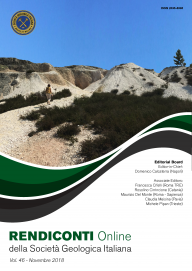
Roughness-based landscape segmentation via fuzzy clustering: potentials of a robust surface texture estimator
Sebastiano Trevisani (1) & Michele Rocca (2)
(1) Università Iuav di Venezia, Dipartimento DACC, Dorsoduro 2206, 310123 Venezia.
(2) Freelance consultant.
Corresponding author e-mail: strevisani@iuav.it.
Volume: 46/2018
Pages: 128-135
Abstract
In this study, the impact of robust surface texture indices on the unsupervised morphological segmentation of an alpine basin is explored. Roughness indices calculated on a high resolution digital terrain model derived by means of airborne LiDAR (Light Detection and Ranging) are used as input features in the clustering procedure. The segmentation in textural classes is based on a fuzzy clustering approach, permitting the optimal selection of the number of clusters and fuzziness of the classification. A comparison is made between clusters derived from variogram-based indices and MAD–based (median absolute differences) roughness indices within a small alpine basin. As expected, with both approaches, the fuzzy clustering revealed a high fuzziness and a high degree of mixing between textural classes. However, the segmentation derived using MAD-based roughness indices shows relevant improvements; in particular, the spatial patterns of the MAD-based classification show less artifacts respect to the variogram-based one.
Keywords
Get Full Text